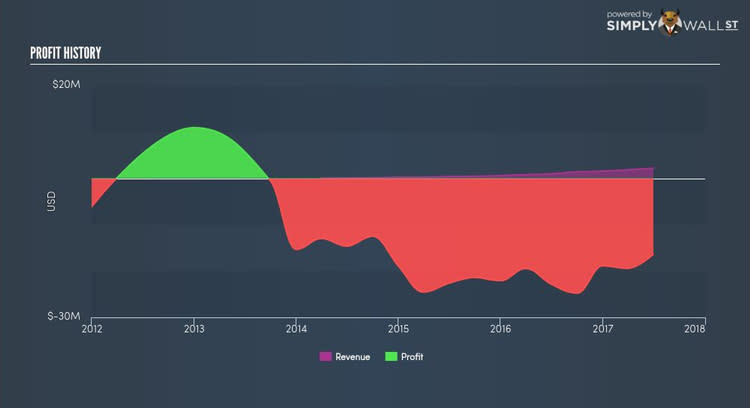All You Need To Know About MediWound Ltd’s (MDWD) Risks

If you are looking to invest in MediWound Ltd’s (NASDAQ:MDWD), or currently own the stock, then you need to understand its beta in order to understand how it can affect the risk of your portfolio. Generally, an investor should consider two types of risk that impact the market value of MDWD. The first type is company-specific risk, which can be diversified away by investing in other companies to reduce exposure to one particular stock. The other type of risk, which cannot be diversified away, is market risk. Every stock in the market is exposed to this risk, which arises from macroeconomic factors such as economic growth and geo-political tussles just to name a few.
Different characteristics of a stock expose it to various levels of market risk. A popular measure of market risk for a stock is its beta, and the market as a whole represents a beta value of one. A stock with a beta greater than one is expected to exhibit higher volatility resulting from market-wide shocks compared to one with a beta below one.
Check out our latest analysis for MediWound
What is MDWD’s market risk?
MediWound's beta of 0.1 indicates that the stock value will be less variable compared to the whole stock market. The stock will exhibit muted movements in both the downside and upside, in response to changing economic conditions, whereas the general market may move by a lot more. MDWD’s beta indicates it is a stock that investors may find valuable if they want to reduce the overall market risk exposure of their stock portfolio.
How does MDWD's size and industry impact its risk?
With a market cap of USD $132.82M, MDWD falls within the small-cap spectrum of stocks, which are found to experience higher relative risk compared to larger companies. Conversely, the company operates in the pharmaceuticals, biotechnology and life sciences industry, which has been found to have low sensitivity to market-wide shocks. As a result, we should expect a high beta for the small-cap MDWD but a low beta for the pharmaceuticals, biotechnology and life sciences industry. It seems as though there is an inconsistency in risks from MDWD’s size and industry. There may be a more fundamental driver which can explain this inconsistency, which we will examine below.
Is MDWD's cost structure indicative of a high beta?
An asset-heavy company tends to have a higher beta because the risk associated with running fixed assets during a downturn is highly expensive. I examine MDWD’s ratio of fixed assets to total assets to see whether the company is highly exposed to the risk of this type of constraint. Since MDWD’s fixed assets are only 9.33% of its total assets, it doesn’t depend heavily on a high level of these rigid and costly assets to operate its business. As a result, the company may be less volatile relative to broad market movements, compared to a company of similar size but higher proportion of fixed assets. This is consistent with is current beta value which also indicates low volatility.
What this means for you:
Are you a shareholder? You could benefit from lower risk during times of economic decline by holding onto MDWD. Its low fixed cost also means that, in terms of operating leverage, it is relatively flexible during times of economic downturns. Consider the stock in terms of your other portfolio holdings, and whether it is worth investing more into MDWD.
Are you a potential investor? You should consider the stock in terms of your portfolio. It could be a valuable addition in times of an economic decline, due to its low fixed cost and low beta. However, I recommend you to also look at its fundamental factors as well, such as its current valuation and financial health to assess its investment thesis in further detail.
Beta is one aspect of your portfolio construction to consider when holding or entering into a stock. But it is certainly not the only factor. Take a look at our most recent infographic report on MediWound for a more in-depth analysis of the stock to help you make a well-informed investment decision. But if you are not interested in MediWound anymore, you can use our free platform to see my list of over 50 other stocks with a high growth potential.
To help readers see pass the short term volatility of the financial market, we aim to bring you a long-term focused research analysis purely driven by fundamental data. Note that our analysis does not factor in the latest price sensitive company announcements.
The author is an independent contributor and at the time of publication had no position in the stocks mentioned.

